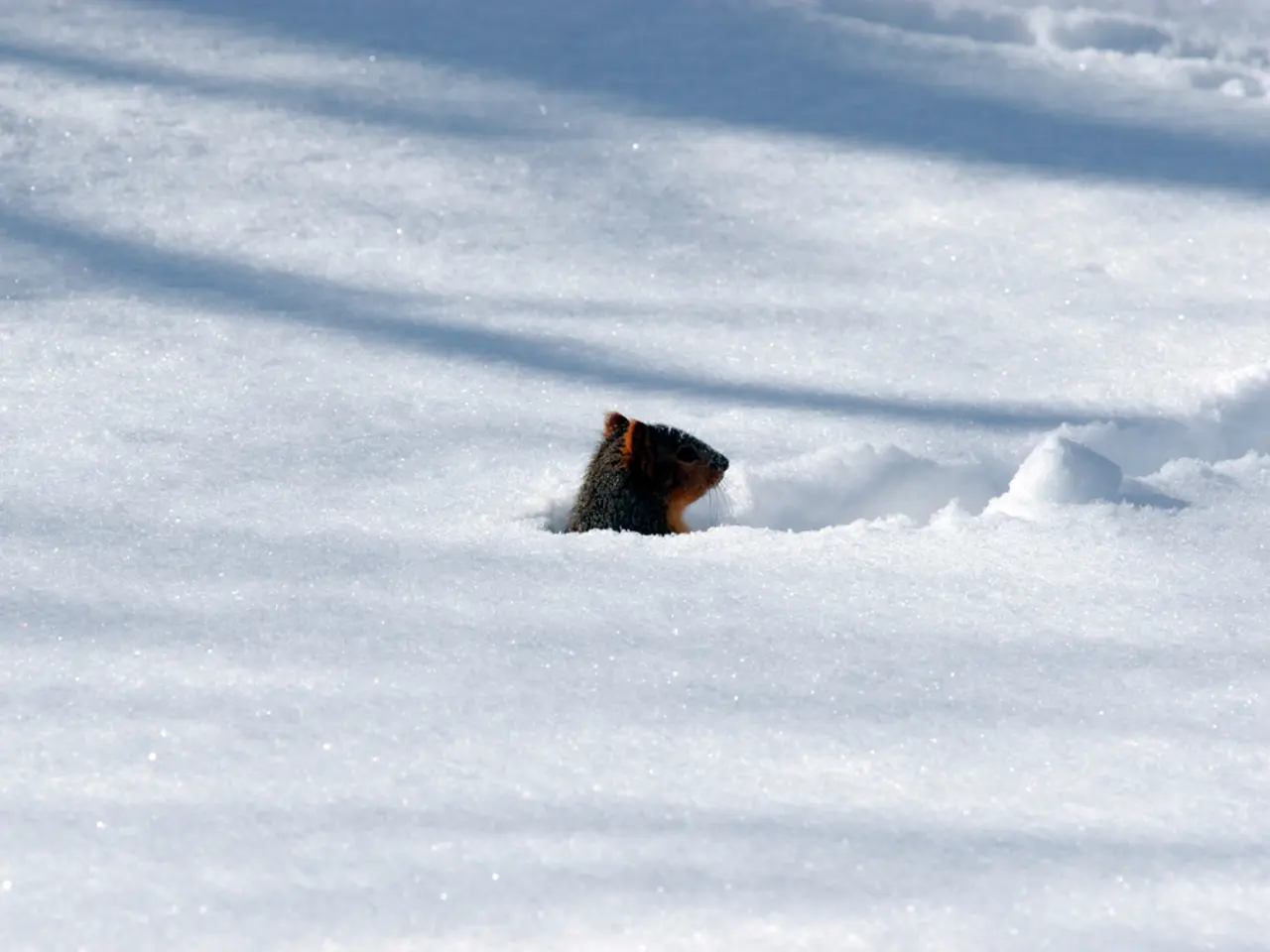Reckless hikers using social media, often inexperienced and unprepared, prompt complaints from French mountain rescuers due to a surge in emergency calls
Unprepared Hikers Pose Challenges for Mountain Rescue Services in France
The Alps of France are witnessing an influx of city-dwellers, drawn by the allure of sunsets in the mountains, often unprepared for the harsh winter conditions. One such rescuer, Lionel Chatain of Alpes de Grenoble, recounted an incident involving tourists who took the train from Paris, unaware that paths are often covered in snow during winter, requiring crampons.
This trend of underprepared hikers is a growing concern, driven by the increasing interest in popular mountain trails, insufficient knowledge, unrealistic perceptions of trail difficulty, and inadequate preparation. Common contributing factors include underestimating the physical challenge, assuming trails are always easy or well-marked, neglecting the need for proper guidance or equipment, and ignoring the harsh mountain environment. Consequently, safety incidents and fatalities have risen as a result of this lack of preparedness.
Key factors contributing to the issue:
- Underestimating trail difficulty and physical demands: Many hikers assume famous routes like the Tour du Mont Blanc (TMB) are "easy" due to popularity, signage, or social media portrayal. However, these trails can be very challenging even for individuals with above-average fitness, and the risk of getting lost or exhausted is real.
- Overconfidence and myths: Some believe guides are unnecessary or that a map alone suffices, leading to solitary trekking without adequate experience or support. This mentality can result in getting lost or encountering hazards without backup.
- Increasing number of inexperienced hikers: Mountain destinations attract more visitors who are drawn by scenic beauty but lack necessary preparation or respect for mountain conditions, resulting in accidents and fatalities.
To mitigate these risks, safety tips for mountain hiking in France include:
- Thoroughly research and realistically assess the trail: Understand the length, elevation gain, and technical difficulty. Read recent trail reports from credible sources.
- Use appropriate gear: Wear sturdy hiking boots, adequate clothing layers for sudden weather changes, and carry navigation aids such as GPS devices, maps, and a compass.
- Consider hiring a guide or join groups: Especially for complex or remote routes, a guide provides local knowledge, enhances safety, and improves navigation.
- Prepare physically: Ensure your fitness level matches the demands of the hike.
- Check weather forecasts and trail conditions before and during the hike: Mountain weather can change rapidly.
- Inform someone of your plans: Share your route and expected return time.
- Carry sufficient food, water, and emergency supplies: Including a first-aid kit and communication device.
- Avoid hiking alone if inexperienced: Travel with others who are competent hikers.
- Respect signs and stay on marked trails: Especially on well-known routes like the Tour du Mont Blanc where marked trails exist but can still be tricky.
- In winter, it's essential to wear plenty of layers and consider insulating items like a down jacket.
Jeremie Pesenti of the Alpes de Grenoble mountain rescue confirms this trend, stating that his office is receiving more calls from inexperienced hikers than ever before. These unorganised hikers rely too much on what they find on social media and on apps that suggest routes. The rise of social media is contributing to inexperienced trekkers embarking on potentially dangerous hikes.
To navigate safely, hikers should invest in a satellite communicator for remote areas, use an accurate, modern map or a suitable maps app, and wear a good pair of hiking shoes or boots. If you're going to be trekking in the snow, you should consider wearing appropriate crampons.
These issues have been particularly prevalent in the summer, but could prove even more dangerous in the unforgiving weather and biting temperatures of winter in the mountains. It's crucial for hikers to respect the challenges of the mountains and prepare accordingly to ensure a safe and enjoyable experience.
Read also:
- Pharmaceutical workplace safety is bolstered by the implementation of Safety Eyewear Programs.
- Slower Electric Vehicle Adoption in India Compared to US, EU, and China According to NITI Aayog Report
- Top-Tier All-Terrain Vehicles Available in India for Less Than ₹15 Lakhs
- Luxurious Aston Martin Valkyrie Spider, adorned with crystals and valued at $4 million, required the efforts of 12 individuals working for 1,500 hours to create.








